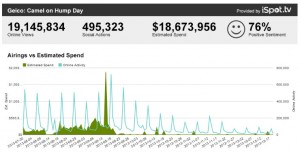Cull the Follow Herd.
I’m a big Lindsey Vonn fan. It borders on creepy but not creepy enough to visit her Facebook page. Yesterday, Lindsey announced she pulled out of the Sochi games. I learned about it on Twitter. She in in my Facebook feed, I think, but doesn’t show up so much as she’s kind of busy.
As an adult and marketer, I have started to coalesce my thoughts on social networks. Readers know I’ve long said Facebook is for friends and school peeps. LinkedIn is for people with whom I have done business (ish). Twitter is for all of the above plus likeminds and admirees. Twitter is where I share my total persona. Some politics. Some personal philosophy. Some troll-able business scat (not the dung). It is where I hope to learn from others, often those unknown. Twitter is my most expansive social network.
Facebook is only as good as the shares — and sharing is magnified based on how close you are to the person. I’m not going Gaga over a 7th grade crush showing pictures of her kids in Clearwater (Facebook). Your feed is watered down if it has too many uninteresting posts. Burger King is offering $4.00 duck burgers. That said, I really don’t cull the “follow herd” and that’s an issue for Facebook. Too much noise in the feed.
What to do about it.
Remove unwanted friends, peripheral people and brands from your Facebook community. You can always add them back. You can always find the brand if you need it. Play LinkedIn by the book and only connect with those you have done business with. The rest is spam. And fly like a birdie on Twitter. Note to Twitter: don’t extend beyond 140 characters. Where does this leave marketers? Better off. With more traffic to their own sites and ads that are more powerful because they are ads – not friends. Peace.

